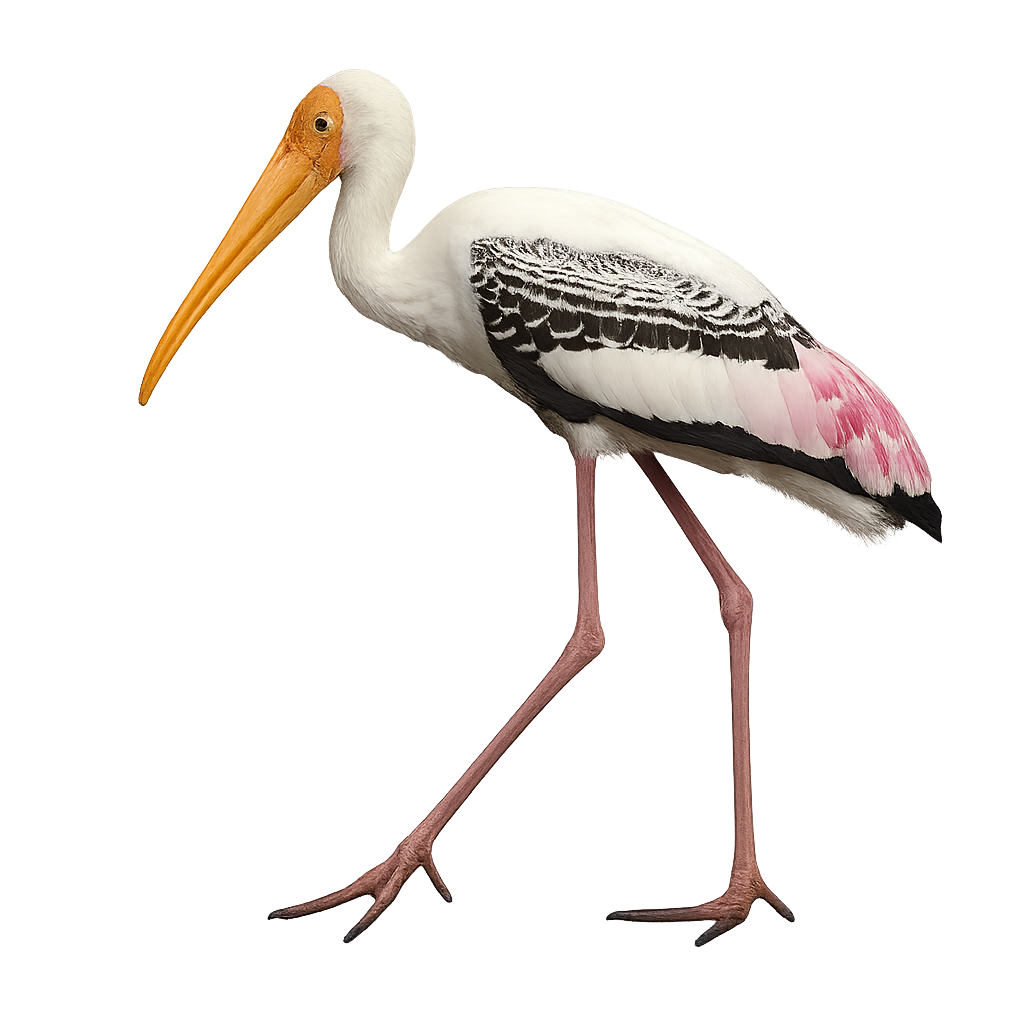Your wildlife photography guide.
Explore the painted stork in detail, study its behavior, prepare your shots.
Where to observe and photograph the painted stork in the wild
Learn where and when to spot the painted stork in the wild, how to identify the species based on distinctive features, and what natural environments it inhabits. The WildlifePhotographer app offers tailored photography tips that reflect the painted stork’s behavior, helping you capture better wildlife images. Explore the full species profile for key information including description, habitat, active periods, and approach techniques.
Painted Stork
Scientific name: Mycteria leucocephala

IUCN Status: Near Threatened
Family: CICONIIDAE
Group: Birds
Sensitivity to human approach: Suspicious
Minimum approach distance: 10 m
Courtship display: February to April
Incubation: 27-30 jours
Hatchings: March to May
Habitat:
Wetlands, lakes, rivers, marshes
Activity period :
Primarily active during the day, with peak activity in the morning and late afternoon.
Identification and description:
The Painted Stork, Mycteria leucocephala, is a large wading bird known for its striking white plumage, black wings edged with white, and pink bald head. It inhabits wetlands across South and Southeast Asia, feeding on fish, frogs, and aquatic insects. Its long, slightly curved bill is adept at catching prey. Breeding colonies are often located in trees near water, where pairs build large nests. Although social, the Painted Stork can be wary of humans. Its population is declining due to habitat loss and water pollution, leading to its classification as near threatened by the IUCN.
Recommended lens:
400mm – adjust based on distance, desired framing (portrait or habitat), and approach conditions.
Photography tips:
To photograph the Painted Stork, focus on wetlands early in the morning or late afternoon to take advantage of soft light. Use a 400mm or longer telephoto lens to capture detailed images without disturbing the bird. Be patient and discreet, hiding behind bushes or camouflage nets. Observe the bird's behavior to anticipate its movements and capture dynamic shots. Remember to check the weather, as a cloudy sky can provide ideal diffused light for photography.
The WildlifePhotographer App is coming soon!
Be the first to explore the best nature spots, track rutting seasons, log your observations, and observe more wildlife.
Already 1 430 wildlife lovers subscribed worldwide

